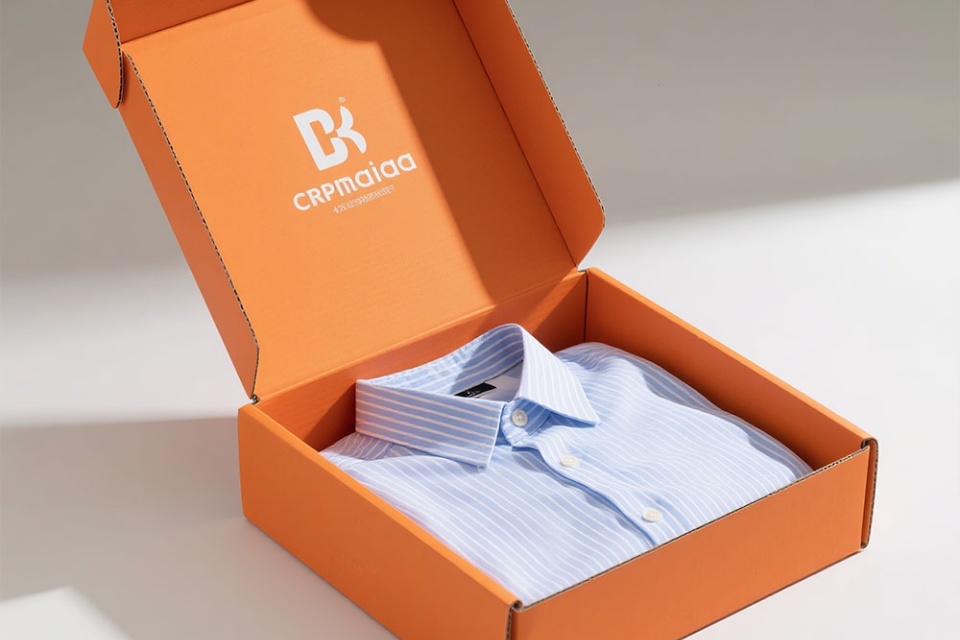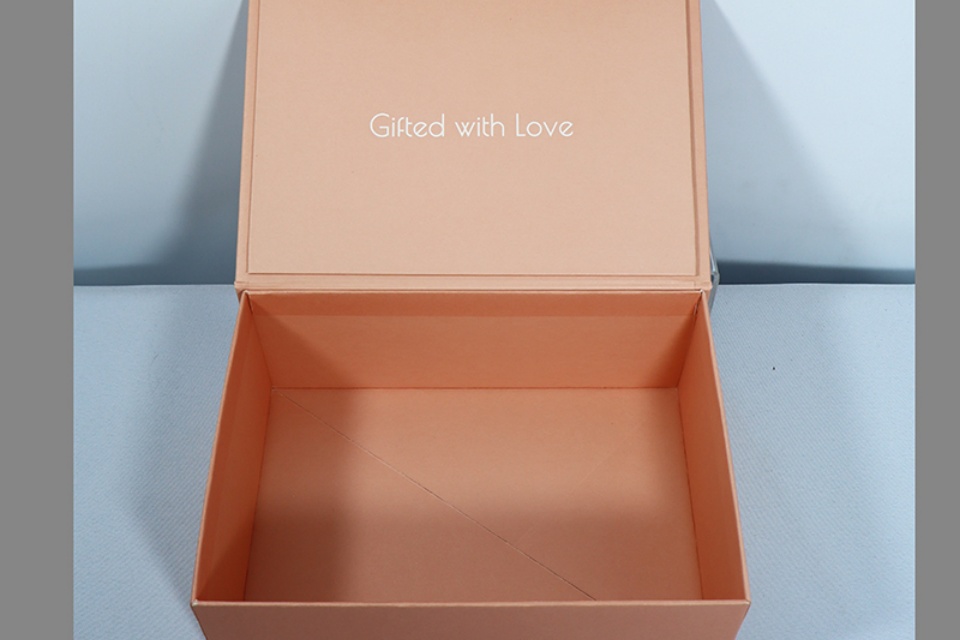Industry News
Apparel Packaging For e-Commerce Vs. Retail Stores
Apparel Packaging For e-Commerce Vs. Retail Stores
Summary
Apparel packaging for e-commerce and retail stores refers to the various materials and designs employed to protect, present, and deliver clothing items in different purchasing contexts. This distinction is essential as it shapes customer experiences and influences brand perception. In the fast-growing e-commerce sector, packaging plays a critical role in ensuring that products arrive intact while also enhancing the unboxing experience, which has become a vital aspect of customer satisfaction and brand loyalty. Conversely, retail packaging aims to attract consumers in physical stores, using visually appealing designs to differentiate products on crowded shelves and create immediate emotional connections with shoppers.
Notably, sustainability has emerged as a key consideration in both e-commerce and retail apparel packaging, driven by consumer demand for environmentally responsible practices. Brands are increasingly exploring eco-friendly materials and innovative designs to reduce their environmental impact and appeal to a more eco-conscious audience. This shift toward sustainable solutions has sparked debates around "greenwashing," where companies may misrepresent their commitment to sustainability, thus challenging consumer trust and complicating the purchasing decision process.
While e-commerce packaging emphasizes durability and cost-efficiency to withstand shipping challenges, retail packaging prioritizes aesthetic appeal and sensory engagement to enhance in-store experiences. As companies navigate these distinct needs, the ongoing evolution of packaging materials—ranging from biodegradable plastics to custom designs—reflects broader trends in consumer preferences and technological advancements. Consequently, brands must strike a balance between functionality, aesthetics, and sustainability to remain competitive in an increasingly demanding market.
Types of Apparel Packaging
Apparel packaging encompasses a variety of materials and designs tailored to protect and present clothing items effectively for both retail and e-commerce settings. The choice of packaging not only impacts the safety of the garments during transit and display but also plays a crucial role in brand perception and sustainability.
Plastic Packaging
Ziploc Bags and Grip Seal Bags
Plastic packaging options like Ziploc bags, also referred to as grip seal bags, are popular for their durability and reusability. These bags are versatile, allowing for easy storage and protection of various items. Their environmentally responsible nature stems from the potential for multiple uses before disposal.
Poly Bags
Poly bags, often used in the apparel industry, are common for their lightweight and cost-effective qualities. These bags can be compostable or made from recycled materials, promoting sustainability. However, traditional poly bags are associated with significant plastic pollution issues, as they often end up in landfills and take centuries to decompose. In response, there is a growing trend towards the use of biodegradable or recyclable poly bags.
Paper Packaging
Paper Cans and Ocea Bags
For clothing items like t-shirts and socks, paper cans, or cylindrical containers made from recycled materials, offer an eco-friendly packaging alternative. They are becoming increasingly popular due to their sustainable nature and ability to present garments attractively. Additionally, paper Ocea bags are another sustainable option, combining style with environmental consciousness.
Ribbon Handle Paper Bags
These luxury carrier bags are designed for upscale markets, particularly for events like weddings and gifting. The aesthetic appeal of ribbon handle paper bags enhances the presentation of the packaged items, making them a popular choice for retailers looking to create a sophisticated customer experience.
Box Packaging
Corrugated Boxes
Corrugated cardboard boxes are a staple in apparel packaging, providing durability and protection for shipping. They are lightweight, recyclable, and suitable for a variety of clothing items, including heavier products like boots and coats. The use of double-walled cardboard can enhance the protection of fragile items during transit.
Custom Folding Cartons
Folding cartons are lightweight and versatile, allowing for easy assembly and customization. Made from renewable paperboard materials, these boxes are designed for convenience and can be adapted to various product sizes, making them cost-effective for retailers.
Specialty Packaging
Delivery Boxes
In the realm of e-commerce, delivery boxes serve as the primary means of transferring goods from sellers to consumers. These boxes are designed to protect the apparel during shipping and are often branded to enhance the customer's unboxing experience.
Cinch Bags
Cinch bags, also known as drawstring bags or gym sacks, provide a practical solution for transporting clothing items to and from places like gyms. Their flexible design accommodates bulkier items and offers ease of use.
Sustainable Innovations
The apparel industry is increasingly focused on sustainable packaging solutions, with innovations such as bio-based bags being tested. These bags aim to combine the best attributes of traditional plastic and paper, offering recyclability, biodegradability, and environmental friendliness. The trend toward sustainable packaging is essential for brands looking to appeal to eco-conscious consumers while minimizing their environmental impact.
E-commerce Apparel Packaging
E-commerce apparel packaging refers to the materials and designs used to ship clothing items purchased online. The primary function of this type of packaging is to protect garments during transit while also creating a positive impression when the package is opened by the customer. As the online shopping experience lacks the physical touch and feel of retail shopping, the unboxing experience becomes a critical component of customer satisfaction and brand loyalty.
Characteristics of E-commerce Apparel Packaging
E-commerce packaging is designed to meet specific requirements that differ from traditional retail packaging.
Durability and Protection
The foremost priority of e-commerce packaging is to ensure that items arrive at their destination intact. This involves using sturdy materials such as corrugated cardboard boxes, bubble wrap, or air pillows that can withstand the rigors of shipping, including bumps and drops. Additionally, lightweight materials are favored to minimize shipping costs, as every ounce contributes to overall postage fees.
Aesthetic Appeal and Branding
While the main goal is protection, the aesthetics of e-commerce packaging are also essential. The packaging serves as a brand ambassador and contributes to the overall customer experience. Elements such as attractive designs, colors, and promotional inserts can enhance the unboxing experience, making it feel more luxurious and personalized. This attention to detail can lead to increased brand loyalty and positive word-of-mouth marketing.
Sustainability Considerations
Sustainability is becoming increasingly important to consumers, especially among younger generations. Many brands are opting for eco-friendly materials and practices in their packaging solutions to address this demand. This includes using recyclable materials and reducing excess packaging waste. However, it is essential for brands to avoid "greenwashing," where misleading claims about sustainability can undermine consumer trust.
Challenges in E-commerce Apparel Packaging
E-commerce apparel packaging faces several challenges that must be managed to optimize both cost and customer satisfaction:
Cost Efficiency
Shipping clothing involves unique challenges related to size and weight variations, which can complicate cost management. Businesses need to carefully consider package size to avoid extra costs associated with dimensional weight pricing used by shipping carriers. Innovative packaging solutions, such as using tubes for t-shirts or durable envelopes, can help minimize waste and reduce shipping fees.
Returns Management
Handling returns is a significant concern in the e-commerce apparel sector. Poorly managed returns can affect profitability and lead to increased waste. Developing efficient return logistics and using returns management software can streamline the process and mitigate environmental impacts associated with returns.
Retail Store Apparel Packaging
Retail store apparel packaging plays a crucial role in the consumer experience, serving as a brand's visual ambassador on the shelves. This type of packaging is designed to attract attention and convey essential product information effectively, making it integral to the marketing strategy of fashion brands.
Goals and Focus of Retail Packaging
The primary goal of retail apparel packaging is to make an immediate impact on consumers. It acts as a silent salesperson, designed to entice potential buyers with its visual appeal and informative elements. Bright colors, engaging graphics, and clear branding are essential components that help differentiate products in a crowded retail environment. The packaging should create an emotional connection with shoppers, compelling them to pick up the item and consider a purchase.
Design Elements
Effective retail packaging incorporates several key design elements. The materials used should not only be visually appealing but also robust enough to protect the contents during transit and handling. Features such as windows for product visibility, tactile textures, and unique shapes can enhance the sensory experience, making the packaging more memorable and engaging for consumers. Additionally, brands may include functional elements, such as 'try me' buttons or interactive QR codes, to provide consumers with a more immersive experience before making a purchase.
Enhancing Brand Presence
Custom-printed retail packaging, particularly in the fashion sector, allows brands to express their identity while also ensuring functionality. Utilizing high-quality materials, such as acid-free tissue paper and two-piece rigid boxes, can elevate the perceived value of apparel products. This not only aids in creating a stunning presentation for in-store display but also helps reinforce brand loyalty among consumers, as the packaging reflects the quality and ethos of the brand.
Impact on Consumer Behavior
Retail packaging significantly influences consumer purchasing behavior. Studies suggest that creative and attractive packaging can evoke customer attention and facilitate buying decisions. Moreover, high-quality packaging enhances the perceived value of the product, allowing brands to justify higher price points and stand out in a competitive market. In this way, retail apparel packaging not only serves practical purposes but also contributes to a brand's overall strategy by enhancing customer satisfaction and loyalty.
Comparison of E-commerce and Retail Packaging
E-commerce packaging and retail packaging serve distinct purposes, driven by the different contexts in which products are sold and delivered. Understanding these differences is crucial for brands seeking to optimize their packaging strategies.
Key Differences
Purpose and Functionality
E-commerce packaging is primarily focused on protecting products during shipping and handling, ensuring they arrive intact at the consumer's doorstep. This type of packaging must withstand the rigors of transportation, which includes handling by various parcel carriers and potential rough treatment during transit. Conversely, retail packaging aims to attract consumers in-store, emphasizing visual appeal since customers can see and touch the product before making a purchase.
Design and Materials
E-commerce packaging often utilizes lightweight, cost-effective materials that do not compromise durability. For instance, poly mailers and sturdy cardboard boxes are common choices that balance protection with shipping efficiency. Retail packaging, however, typically employs high-quality finishes and materials designed to stand out on store shelves, such as vibrant prints and intricate designs, enhancing the product's market presence.
Cost Considerations
E-commerce packaging tends to be less expensive than retail packaging, reflecting its functional priorities. It is generally smaller and designed for bulk shipping, which reduces costs associated with materials and shipping fees. Retail packaging, on the other hand, often requires a higher investment due to the need for appealing aesthetics and premium materials that can elevate a product's perceived value.
Branding and Customer Experience
While both packaging types incorporate branding elements, their impact on customer experience differs. E-commerce packaging aims to create a memorable unboxing experience, often including branding and marketing messages that reinforce brand identity during the delivery process. Retail packaging is focused on immediate shelf impact, capturing consumer attention at the point of sale and communicating essential product information effectively.
Sustainability Considerations
Sustainability has become increasingly important in both e-commerce and retail packaging. Brands are exploring eco-friendly materials and practices, driven by consumer demand for sustainable products. E-commerce packaging often seeks to minimize waste and improve recyclability, while retail packaging is adapting to meet similar standards by incorporating sustainable practices into its design and materials. As environmental awareness grows, both packaging types are evolving to align with consumer expectations for sustainability, potentially impacting brand loyalty and purchasing decisions.
Innovations in Apparel Packaging
Innovations in apparel packaging have emerged as a critical component in enhancing brand identity, improving customer experience, and promoting sustainability. As the e-commerce sector continues to grow, brands are leveraging new technologies and materials to create packaging that meets the demands of modern consumers.
Customization and Personalization
One significant trend is the focus on customization and personalization of packaging. This can be achieved at scale through digital printing, which allows for tailored designs that resonate with individual customer preferences. Additionally, modular packaging solutions that adapt to different products are gaining traction, enabling brands to maintain consistent branding while efficiently managing inventory and logistics.
Sustainable Materials
The shift towards sustainability has led to the adoption of biodegradable plastics, which are derived from plant-based materials such as corn and wheat starch, contrasting sharply with traditional petroleum-based plastics. Furthermore, innovations in sustainable packaging materials include compostable poly bags and recycled self-seal bags, which not only protect garments but also appeal to environmentally conscious consumers. By utilizing such materials, companies can significantly reduce their ecological footprint and demonstrate a commitment to responsible resource use.
Smart Packaging Technologies
Emerging technologies are set to revolutionize apparel packaging through smart solutions that enhance functionality and consumer engagement. For example, color-changing packaging responds to environmental stimuli like light and temperature, creating dynamic product presentations. Additionally, the integration of blockchain technology enhances traceability in the supply chain, allowing consumers to verify the sustainability credentials of packaging materials.
User-Friendly Design
User-friendly design is paramount in apparel packaging innovations. Packaging must be easy to open and practical, as overly complicated designs can frustrate customers and detract from the unboxing experience. Brands are increasingly focusing on creating aesthetically appealing packaging that excites consumers while ensuring a seamless interaction with the product upon delivery.
Feedback Mechanisms
Incorporating customer feedback into the packaging design process is becoming a vital tactic for continuous improvement. Brands are utilizing insights from surveys and social media to refine their packaging strategies, ensuring that they align with consumer preferences and expectations. This iterative approach not only fosters customer loyalty but also helps brands stay relevant in a rapidly evolving market.
Consumer Reactions to Packaging Innovations
Packaging plays a pivotal role in shaping consumer perceptions and driving purchasing decisions, particularly in the competitive apparel market. Innovations in packaging design not only enhance aesthetic appeal but also contribute to emotional engagement and functionality, impacting how consumers interact with products and brands.
Impact on Purchase Decisions
Research indicates that product packaging design significantly influences consumer behavior. In a 2018 survey, 72% of American consumers reported that packaging design affected their purchasing decisions, while 67% acknowledged the importance of packaging materials. This indicates that the visual and tactile elements of packaging can create a compelling first impression, making products more appealing in both retail and e-commerce environments. Consumers often form opinions about brands based on the packaging they encounter, leading to either positive or negative associations.
The Role of Unboxing Experience
The unboxing experience has emerged as a critical factor in consumer satisfaction and brand loyalty. The anticipation and excitement associated with unboxing a well-packaged product can lead to a lasting emotional connection with the brand. Studies have shown that a memorable unboxing experience can significantly enhance customer loyalty, with 60% of consumers willing to pay more for products that provide a superior experience. Unique and thoughtful packaging designs encourage customers to share their experiences, resulting in positive word-of-mouth and repeat purchases.
Shift Towards Sustainability
As consumers become increasingly conscious of environmental issues, sustainable packaging has gained traction in the apparel industry. Brands are now re-evaluating their packaging strategies to align with consumer values related to sustainability. Reports suggest that 72% of consumers are actively seeking more environmentally friendly products than they did five years ago, and 81% expect to buy even more in the future. Packaging that prominently features sustainability credentials can enhance brand perception and attract eco-conscious consumers, making sustainability a key driver in packaging innovations.
Visual Appeal and Consumer Psychology
Packaging designs that effectively utilize color, size, and visual elements can also significantly affect consumer perceptions. For instance, colors evoke different emotions—green can evoke feelings of relaxation, while red may convey excitement. Brands that master the art of luxury packaging often set benchmarks within the industry, leveraging strategic design elements such as embossed lettering or metallic foiling to enhance perceived value and exclusivity. By prioritizing aesthetics alongside functionality, brands can create packaging that resonates with consumers and drives purchasing decisions.
Categories
Latest News
Contact Us
Contact: Aaron Lee
Phone: +8613570866244
Tel: +8675529490260
Add: Li Songlang 2nd Industrial Zone,No.18,FengTang Rd,Guangming New District


